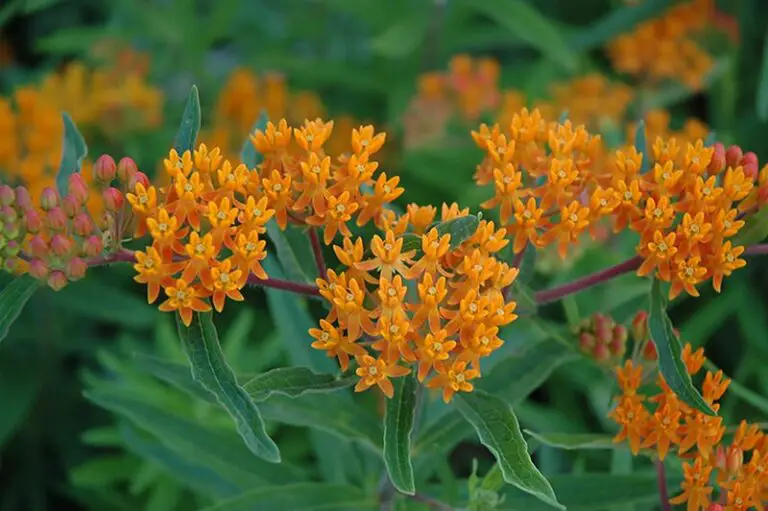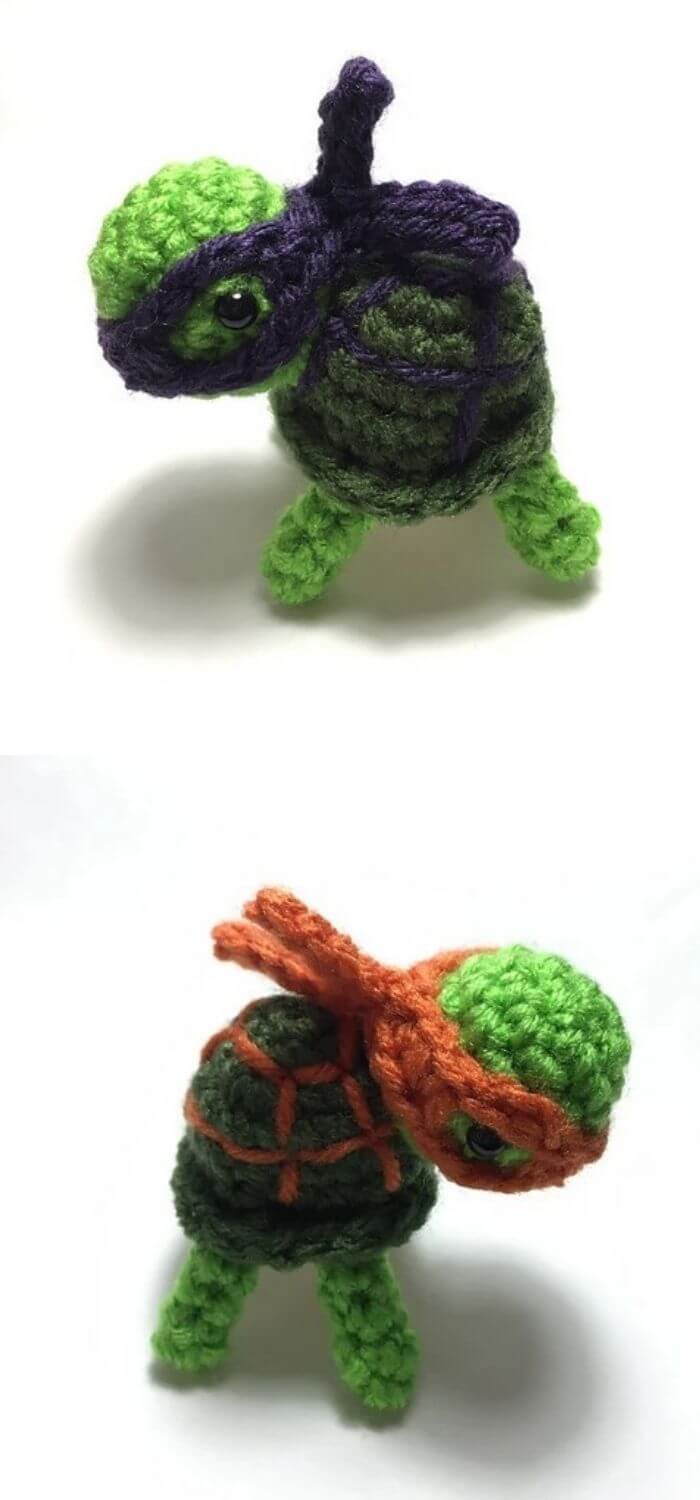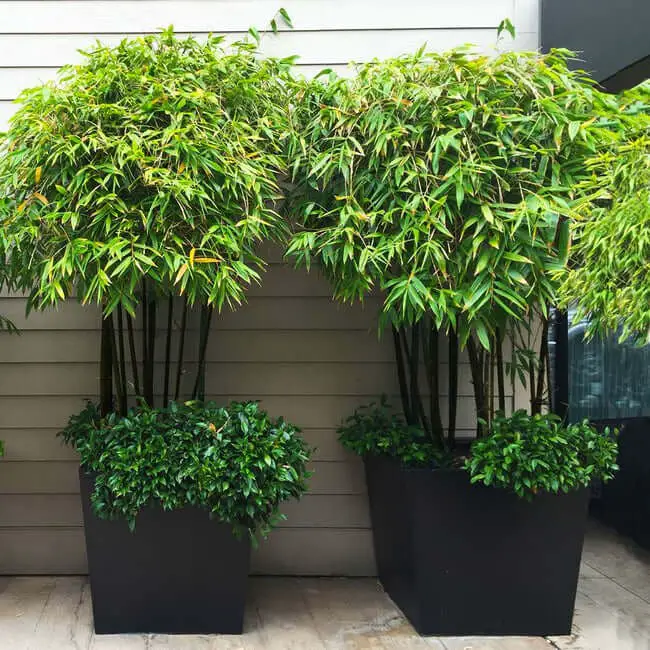13 Weeds With Blue Flowers: Identification And Control Methods
Weeds are often viewed as pesky plants that need to be eliminated, but did you know that some weeds can actually be quite beautiful? One such weed is the butterfly weed, which boasts stunning blue flowers. In this blog post, we’ll delve into the world of weeds and explore not only their beauty but also how to identify and control them. We’ll start by looking at a specific type of weed – one that’s often overlooked in favor of more ‘desirable’ plants.
But before we get started, let me ask you: have you ever stopped to think about the beauty that surrounds you? Maybe it’s time to rethink your stance on weeds! In this article, we’ll explore various types of weeds and discuss their unique characteristics, how to identify them, and most importantly, how to get rid of them. So if you’re looking for a fresh perspective on these lovely plants, keep reading!
Asiatic Dayflower (Commelina communis)
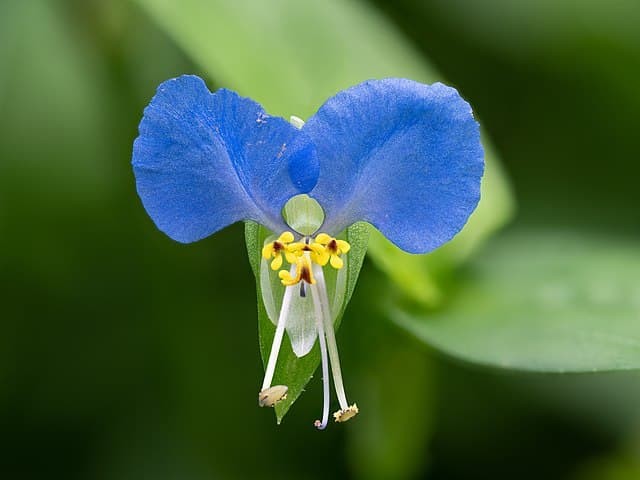
What is Asiatic dayflower?
The Asiatic dayflower is a member of the dayflower family, with its native habitat spanning across Asia. However, due to introduction, it has managed to spread to various parts of the world. This invasive weed is commonly found thriving in lawns, gardens, and waste areas, posing a significant issue in crops like rice, soybeans, and peanuts. Notably, this annual plant completes its life cycle within a single growing season, making it all the more challenging to control.
What does it look like?
Asiatic dayflower, an annual herbaceous plant, can reach impressive heights of up to 50 centimeters. Its leaves, shaped like a lance or oval with a pointed tip and smooth margins, are arranged in pairs along the stem. The flower, characterized by three petals of varying size, boasts a central petal that dominates the smaller side petals. These vibrant blooms, typically blue or violet in hue, sprout from the leaf axils, painting the landscape with color from summer to fall.
How to get rid of it?
The Asiatic Dayflower is a rapid spreader, forming dense mats that can outcompete native plants for resources. For small infestations, manual removal is the most effective method, involving hand-pulling the weed and its roots from the soil. If the issue persists or affects a larger area, herbicides may be necessary to control the population. A combination of physical removal and cautionary measures can prove effective in managing this invasive species.
When dealing with an Asiatic Dayflower infestation, it’s essential to adopt a multi-faceted approach. Manually removing the weed by pulling or loosening the soil with a tool can be done for smaller areas. Larger infestations may require the use of herbicides, but always follow the product’s instructions carefully.
To prevent the Asiatic Dayflower from spreading and taking over your garden, prioritize maintaining a tidy space free of debris and weeds.
Avoid disturbing the soil around established plants whenever possible, as this can dislodge weed seeds. If soil disturbance is unavoidable, be sure to rake up any loose seeds to minimize re-infestation.
Blue Oxalis (Parochetus communis)
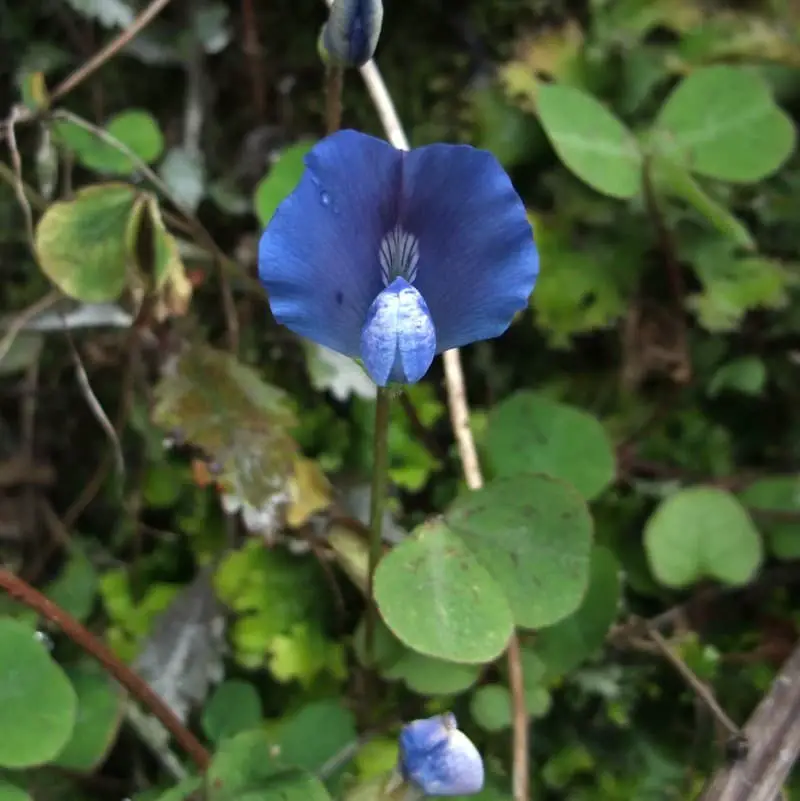
What is blue oxalis?
In the tropical regions of Africa, there exists a unique species of flowering plant known as blue oxalis (Parochetus communis). This perennial herbaceous plant, belonging to the Oxalidaceae family, stands tall up to 30 cm and boasts leaves with three leaflets arranged alternately. The real showstopper, however, are the vibrant blue or violet flowers that adorn its stems, each featuring five delicate petals.
As an added bonus, the fruit of this beautiful plant is a capsule containing seeds, making it a popular choice for ornamental gardens.
How to identify blue oxalis.
The trifoliate leaves, comprising three ovate to lanceolate leaflets, are arranged in a rosette at the stem’s terminus. In contrast, the flowers emerge in clusters that can reach up to 30 individuals and display a range of colors including pink, purple, and white. The fruit, a small capsule, contains four seeds as its characteristic feature.
How to get rid of blue oxalis.
If unwanted blue oxalis has taken over your garden, there are several methods you can employ to eliminate it without harming other plants. One approach is to carefully uproot the oxalis, taking care not to disrupt the root systems of nearby flora. Alternatively, you can try to smother the weeds by layering them with a thick blanket of mulch or newspaper. If these methods don’t prove effective, a glyphosate-based herbicide may be used as a last resort.
However, it’s crucial to follow the product’s instructions carefully to ensure safe and proper use.
Bush Vetch (Vicia sepium)
What is bush vetch?
Bush vetch (Vicia sepium) is a versatile legume that thrives as a climbing plant, reaching heights of up to six feet. Native to Europe and Asia, this plant has also naturalized in North America. Characterized by its small, vibrant blue-violet flowers, bush vetch blooms from June to August and produces seed pods containing two to four seeds after the flowering period. What sets bush vetch apart is its ability to fix nitrogen, a quality that significantly enhances soil health.
By adding essential nitrogen compounds to the soil, this plant plays a vital role in improving soil quality, making it an ideal choice for areas where poor soil conditions prevail.
How can bush vetch be used?
Bush vetch is an incredibly versatile herbaceous perennial that offers a multitude of uses. Its leaves and shoots can be consumed raw or cooked, while its peas can be utilized similarly to other legumes. Furthermore, the plant serves as a valuable cover crop or green manure, enriching the soil with nitrogen when incorporated into it. Additionally, bush vetch is an excellent bee-friendly plant, providing nectar and pollen for early-season bees.
How to identify bush vetch.
As a member of the pea family, bush vetch shares a distinct characteristic with its relatives: pinnate leaves. The individual leaflets are oval in shape, boasting smooth edges, while the stipules take center stage as large and noticeable features. Furthermore, the plant’s flowers emerge in a raceme arrangement. This unique foliage structure allows bush vetch to thrive in various environments, including hedgerows, woodlands, and even roadside verges.
The blooming period typically spans from May to August.
How to get rid of bush vetch.
For effective bush vetch removal, physical extraction is often the best approach. This can be achieved by manually uprooting the plant by its roots or using a gardening tool like a hoe to dig it out. When faced with a large-scale infestation, a herbicide may be necessary. Glyphosate is a commonly used option for killing bush vetch, but ensure you follow the product’s instructions carefully to avoid harming other plants and animals.
In addition to removal methods, preventing bush vetch from spreading can also be achieved by mowing it down before it flowers and sets seed. While this method won’t kill the plant, it will effectively halt its spread. To maintain control over the bush vetch population, regular mowing (weekly or bi-weekly) is recommended.
Carpetweed (Ajuga pyramidalis)
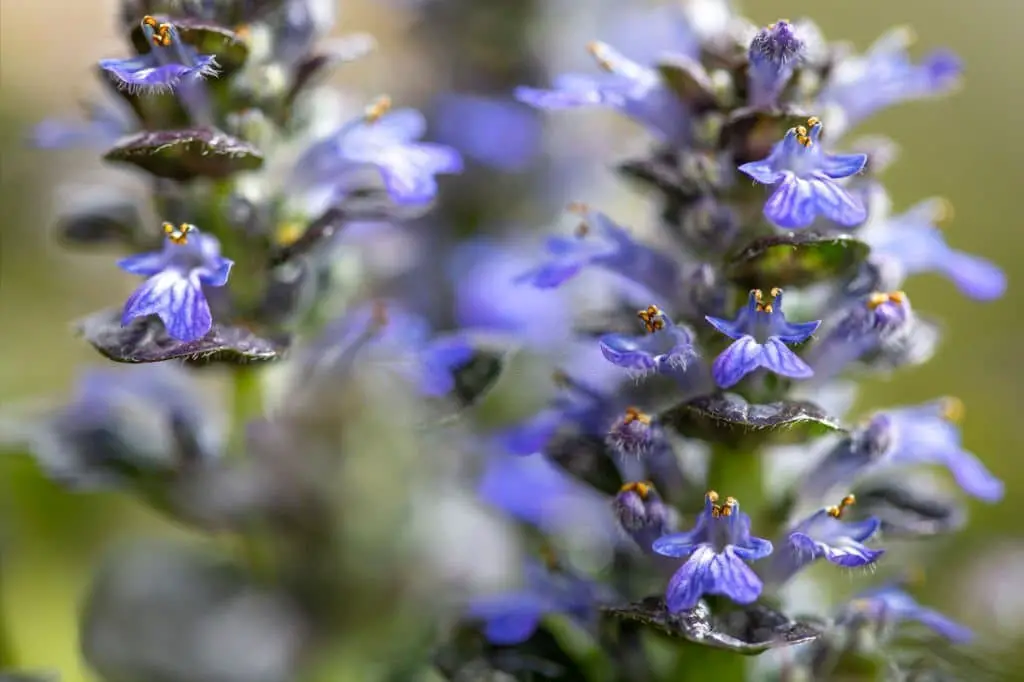
What is carpetweed?
Carpetweed, a ubiquitous weed, often invades lawns, gardens, and landscapes. As a member of the mint family, it’s characterized by square stems and opposite leaves. The tiny, blue or white flowers are arranged in terminal spikes, adding to its distinctive appearance. A widespread presence is observed throughout the United States, making it a familiar sight for many.
What does it look like?
Carpetweed is a compact plant characterized by its dainty blue blooms that emerge in early summer. Its leaves are oval-shaped with a distinctive scalloped edge. This unassuming yet charming species can often be spotted thriving in lawns, gardens, and along roadside verges.
How to get rid of carpetweed.
To effectively eradicate carpetweed, it’s essential to uproot the unwanted plants by their roots, either manually or using a gardening tool. Upon removal, be sure to dispose of the weed in a manner that prevents its spread and proliferation. In addition to physical extraction, consider applying an herbicide to the affected area to prevent regrowth and ensure a prolonged period of weed-free soil.
While carpetweed can be a challenging weed to control, consistent efforts will ultimately lead to successful eradication.
Columbine Aquilegia (Aquilegia vulgaris)
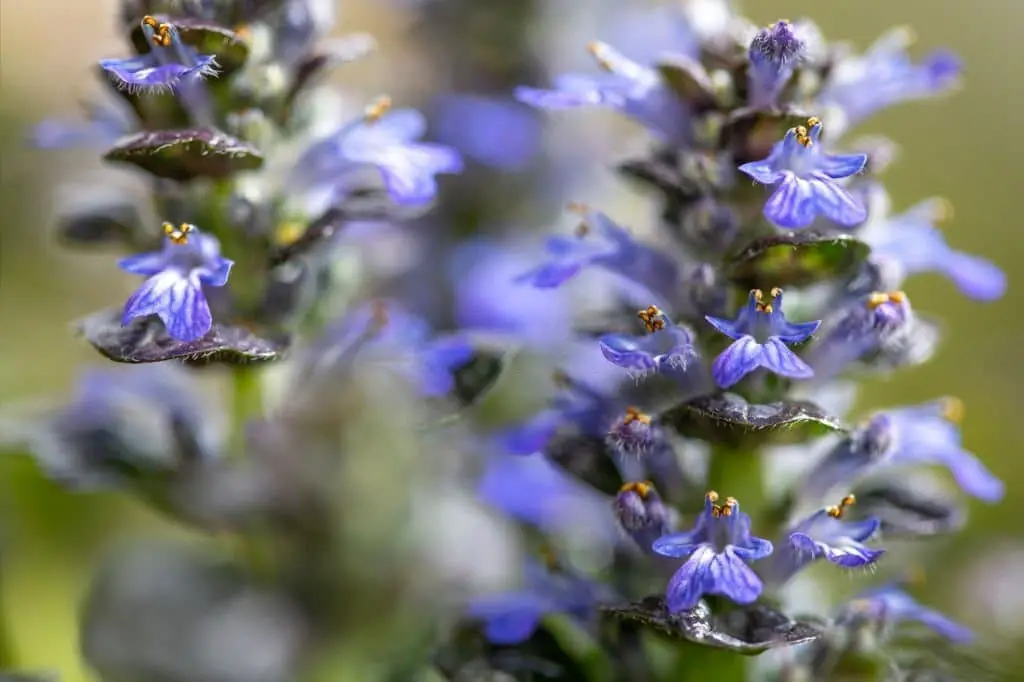
What is columbine aquilegia?
Columbine aquilegia, a member of the Ranunculaceae family, is a perennial flowering plant native to Europe. Also known as garden columbine or European columbine, this species’ Latin name ‘Aquilegia’ derives from the word for eagle, due to the distinctive shape of its flower petals, which resemble an eagle’s claw. This herbaceous perennial typically reaches 30-60 cm (12-24 in) in height, featuring a basal rosette of leaves and stem leaves on long petioles.
Its showy flowers are arranged in racemes or panicles of 15-25 blooms each, with five petals that often display a vibrant red and yellow coloration.
Found naturally in European woods, meadows, and rocky slopes, Columbine aquilegia has been introduced to North America, where it has naturalized in some regions. Its adaptability and striking appearance have made it a popular choice for gardens and wildflower enthusiasts alike.
How to identify columbine aquilegia.
Columbine aquilegia is a herbaceous perennial that can reach heights of approximately 30 cm. Its leaves are arranged alternately, featuring simple and deeply lobed structures with serrated edges on each lobe. The plant’s flowers exhibit bilateral symmetry, comprising five petals in a color palette that typically ranges from red to purple to blue. Notably, the yellow stamens provide a striking contrast to these vibrant hues. As the stems mature, clusters of flowers emerge at their tips.
Upon ripening, the plants produce follicles containing numerous seeds.
How to get rid of columbine aquilegia.
When dealing with unwanted columbine aquilegia in your garden, the most effective method is to physically remove the plant by digging it up and disposing of it properly. While cutting back the foliage may seem like a viable option, this approach can be unreliable in completely eliminating the plant. For more severe infestations, a targeted herbicide treatment may be necessary.
As with any pesticide application, it’s crucial to adhere strictly to the product’s instructions to ensure safe and effective use.
Common Blue Violet (Viola sororia)
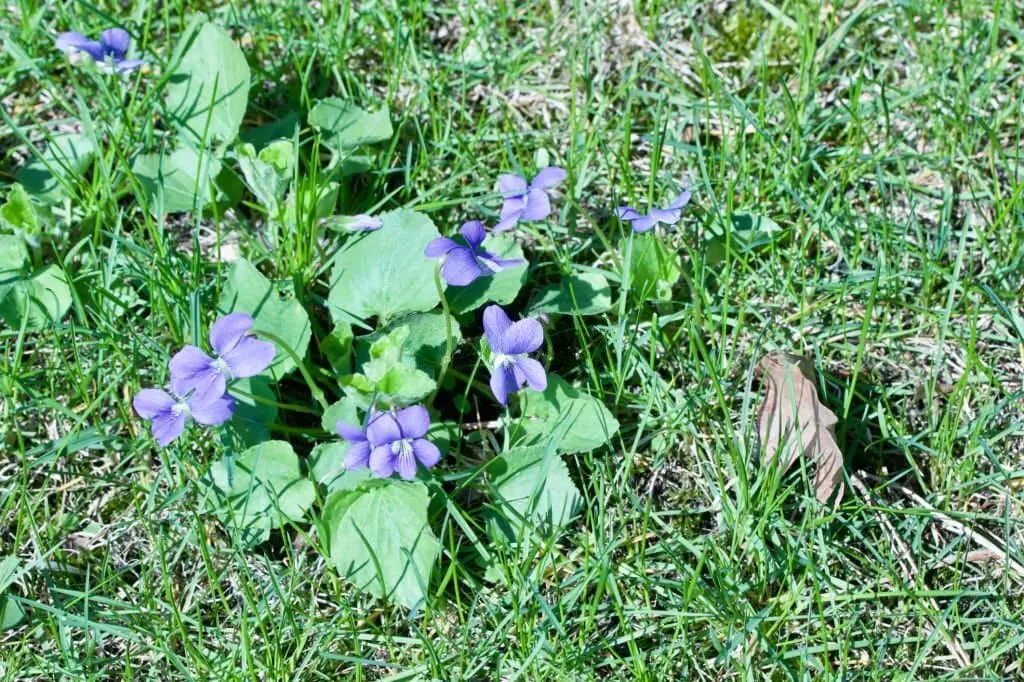
What is common blue violet?
In North America, there exists a species of violet known as the common blue violet (Viola sororia). This particular species holds a unique distinction – it’s been recognized as the state flower in three states: Illinois, Rhode Island, and New Jersey. As such, it’s no surprise that the common blue violet is often found thriving in various environments, including wooded areas, lush meadows, and carefully tended gardens.
Its blooming period typically spans from April to June, filling the air with a sweet fragrance during this time. The name ‘common blue violet’ stems directly from its vibrant blue flowers, which are an undeniable highlight of this perennial plant. In terms of physical characteristics, the common blue violet reaches a height of approximately six inches, making it a modest yet charming addition to any landscape.
Its leaves take on a heart-shaped form and a deep green hue, providing a striking contrast to the delicate blue blooms that emerge from its stems. Each flower is comprised of five petals, measuring roughly one inch in diameter, adding to the overall visual appeal of this stunning plant.
How to identify common blue violet.
Across North America, the common blue violet (Viola sororia) can be spotted in woods and fields, its delicate charm captivating all who behold it. The plant’s heart-shaped leaves and striking flowers with yellow centers are a treat for the eyes. Upon closer inspection, one will notice that the petals display a fascinating dichotomy – deep purple on the exterior and lighter purple on the interior.
In recognition of its unique beauty, the common blue violet has been honored as the state flower of Illinois, Rhode Island, and New Jersey.
How to get rid of common blue violet:
To effectively eradicate common blue violet, start by manually removing it by grasping the root and gently pulling it out of the ground. Alternatively, a hoe or other gardening tool can be used to dig up the offending plant. For larger infestations, consider employing herbicides as a more efficient means of control.
Glyphosate has been shown to be an effective solution for common blue violet, but it is essential to adhere strictly to the product’s label instructions and take necessary precautions when applying.
Creeping Bellflower (Campanula rapunculoides)
What is creeping bellflower?
Creeping bellflower, a perennial weed native to Europe, has been naturalized in North America since the early 1800s. Today, it can be found in all 48 contiguous states, as well as parts of Canada. This invasive plant gets its name from its distinctive bell-shaped flowers, which range in color from white to blue and bloom from June to August. Following the flowers’ blooming period, small, round fruits emerge.
As a member of the Campanula family, creeping bellflower is closely related to the garden bellflower (Campanula poscharskyana). However, its problematic nature stems from its ability to rapidly spread and outcompete native plants, particularly in forested areas where it forms dense mats that hinder the growth of other vegetation. Moreover, this invasive weed produces an astonishing number of seeds – up to 80,000 per plant! – which are easily dispersed by wind and animals.
What does creeping bellflower look like?
A perennial native to Europe, this plant has naturalized itself in North America as well. Its slender stem can reach heights of up to four feet, providing a striking presence in any garden. The leaves, a deep green hue with a jagged silhouette, are a notable feature. In contrast, the bell-shaped flowers that bloom from June to August boast a vibrant blue or purple color palette, adding a pop of color to an already impressive display.
How to get rid of creeping bellflower:
When dealing with Creeping Bellflower (Campanula rapunculoides) on your property, manual removal is often the most effective approach. This involves digging up the entire plant, taking care not to leave any roots or stem fragments behind. Failing to remove these can result in regrowth, as the plant’s underground structures are capable of producing new growth.
For a more thorough removal, consider using a shovel or trowel to carefully excavate the area, ensuring you capture all portions of the plant. If chemical control is desired, glyphosate-based herbicides can be employed, provided their use follows the product label instructions precisely.
Forget-me-not (Myosotis scorpioides)
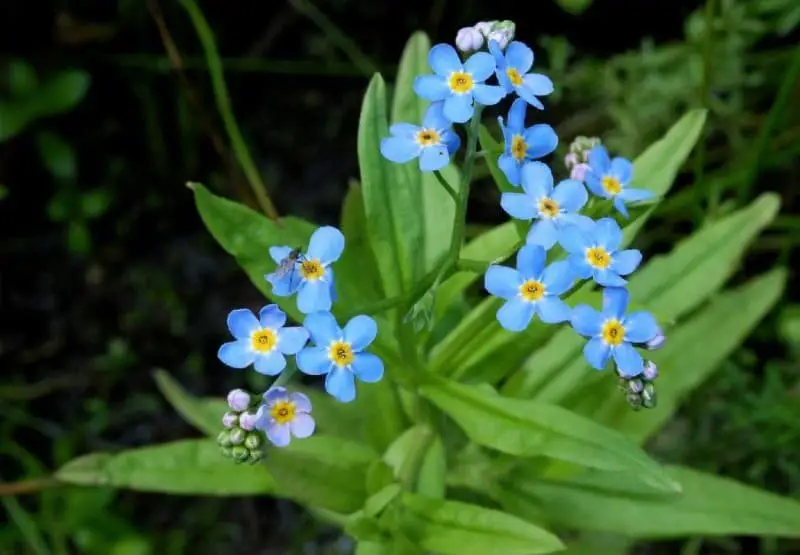
What is Forget-me-not?
The forget-me-not flower is a poignant reminder of the enduring power of love and remembrance. According to Greek mythology, Orpheus’s tragic loss of his beloved Eurydice led him to venture into the underworld in an attempt to bring her back to the world of the living. As he turned to gaze at her one final time, she vanished forever, leaving behind a legacy that would be eternally linked to this small yet striking bloom.
With its delicate petals and soft hue, the forget-me-not has become a symbol of the enduring nature of love and memory. Found in temperate regions worldwide, these charming flowers thrive in environments with rich soil and partial shade, where they can grow into their full beauty.
What does Forget-me-not look like?
Forget-me-nots are characterized by their dainty appearance, boasting blue petals and a bright yellow center. These diminutive flowers grow in clusters, supported by slender stems that can reach lengths of up to 18 inches. The leaves, shaped like lances, are paired along the stem, adding to the plant’s delicate charm. Native to Europe and Asia, forget-me-nots thrive in damp, forested environments.
However, they have also been introduced to North America through European settlement, where they are now a common sight.
How to get rid of Forget-me-not:
For effective forget-me-not removal, consider a multi-faceted approach. One option is to physically uproot the plant, ensuring all roots are removed to prevent regrowth. Alternatively, you can try smothering it with a thick layer of mulch, which can starve the plant of light and prevent further growth. For more extensive infestations, glyphosate-based herbicides may be necessary.
When using an herbicide, it’s crucial to carefully follow the product instructions to avoid damaging surrounding plants.
Germander Speedwell (Veronica chamaedrys)
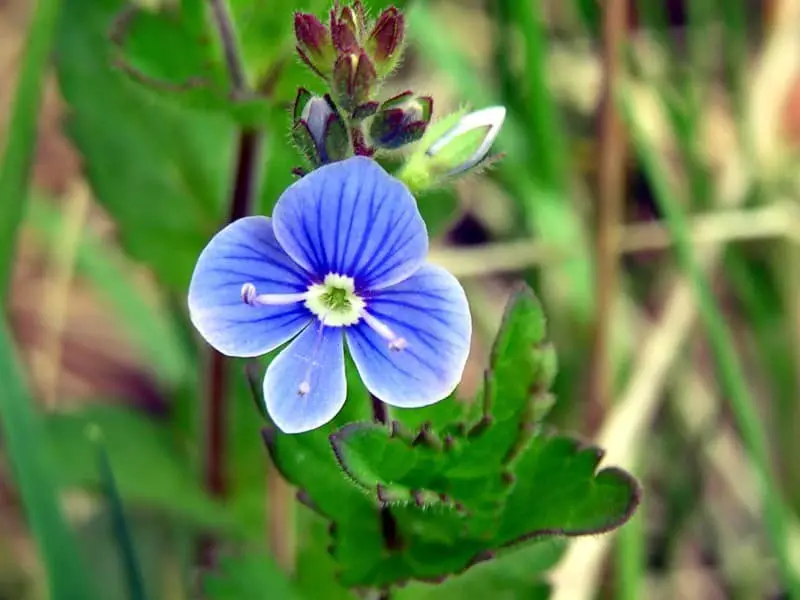
What is Germander speedwell?
Germander speedwell, a diminutive flowering plant, is a native European species characterized by its tiny blue or violet blooms. Its adaptability to various environments, including woodlands, meadows, and roadside verges, allows it to thrive in a range of habitats. The name ‘germander speedwell’ originates from the Greek term for ‘ground-dweller’, a nod to its tendency to grow close to the ground.
This plant family member (Plantaginaceae) shares lineage with foxgloves and mulleins, fellow flowering plants. Introduced to North America in the early 19th century, germander speedwell has since become naturalized in certain regions, although it is considered an invasive species in some areas, such as the Great Lakes region of the United States. Germander speedwell propagates via seed and vegetative reproduction through its rooting stems.
Its ability to form dense mats can displace other plants, altering ecosystem structures. Typically found in disturbed habitats like roadsides, forest edges, and vacant lots, germander speedwell excels in environments where competition is limited.
What does Germander speedwell look like?
Germander speedwell is a diminutive plant that typically reaches a height of around six inches. The opposite, oblong-shaped leaves feature slightly toothed edges and boast green tops with paler undersides. From early spring to late summer, small clusters of blue flowers bloom along the stem, adding visual interest to this unassuming plant.
How to get rid of Germander speedwell:
Germander speedwell, a low-growing yet tenacious spreader, can quickly overrun your garden. To regain control, here are some strategies for managing this unwelcome visitor:
For small-scale infestations, hand-pulling remains the most effective method. Be thorough in removing the entire root system to prevent regrowth.
For more extensive problems, employ a hoe or tiller to loosen the soil and then manually extract the plants.
Alternatively, smother germander speedwell beneath a thick layer of mulch. Regular reapplication – ideally every few weeks – will keep the plant from resurfacing.
As a last resort, herbicides can prove effective. However, it is crucial to adhere carefully to label directions and exercise caution when using these chemicals.
Henbit (Lamium amplexicaule)
What is henbit?
In the mint family, Henbit stands as an annual herb with roots in Europe and Asia. Its introduction to North America has led to its widespread presence as a common weed. With a growth habit that reaches 20-40 cm tall, the plant features square stems bearing ovate leaves arranged oppositely. A distinguishing characteristic of these leaves is their green color with purple spots and hairy surfaces. The flowers, in turn, are borne in whorls of three to six, typically displaying pink or purple hues.
While its rapid spread can lead Henbit to dominate other plant species, it is often found inhabiting gardens, lawns, and agricultural fields alike.
How to get rid of henbit:
To eradicate henbit effectively, uprooting it by its roots is an ideal method. However, if you’re dealing with a significant area of infestation, utilizing a herbicide might be a more practical solution. Glyphosate-based herbicides have been shown to be particularly effective in eliminating henbit. As with any pesticide use, it’s essential to adhere strictly to the manufacturer’s guidelines and instructions for optimal results.
Siberian Squill (Scilla siberica)
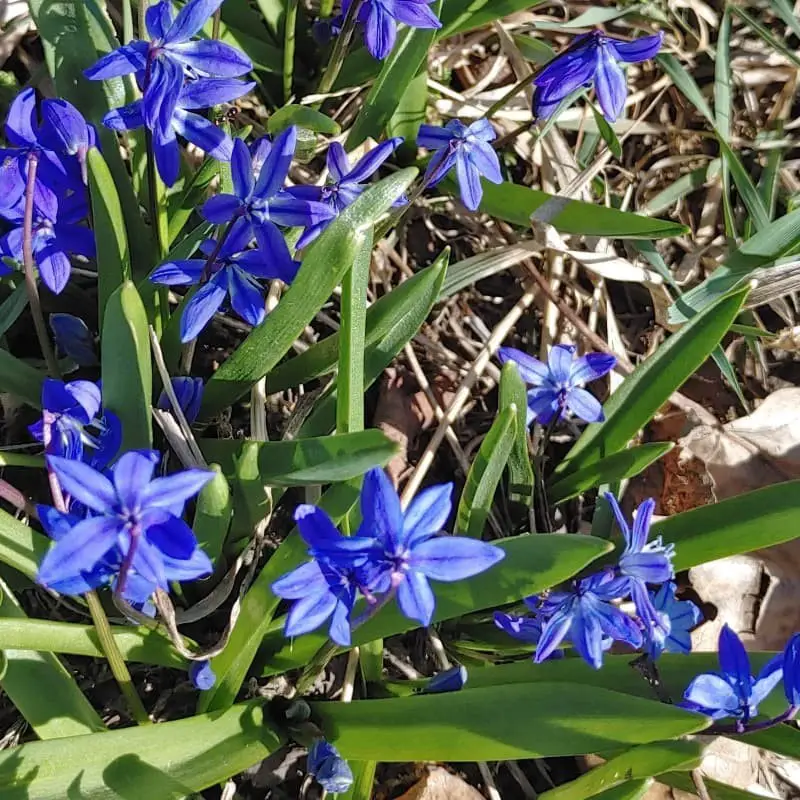
What is Siberian squill?
A fascinating perennial, Siberian squill boasts a unique charm with its vibrant blue flowers that bloom remarkably early in the spring season. This charming plant hails from Russia and Siberia, where it thrives in natural habitats like forests, fields, and even cultivated gardens. Interestingly, Siberian squill was brought to North America during the 1800s as an ornamental addition, further spreading its allure across diverse environments.
What does Siberian squill look like?
Perched at a modest height of approximately six inches, Siberian squill (a perennial plant) is distinguished by its slender, pointed leaves that unfurl into a linear shape. As the seasons transition, this charming flora bursts forth with vibrant blue or violet blooms in early spring, marking the beginning of a new chapter in its life cycle.
How to get rid of Siberian squill:
Siberian squill, a prevalent garden and lawn nuisance, can be effectively managed with some simple strategies. To eradicate this weed for good, consider the following methods: Firstly, manually remove the entire plant by its root system to ensure complete elimination. Alternatively, cut the plant at ground level to stunt its regrowth.
For more persistent infestations, a targeted application of a weed killer can be an effective solution, not only killing the existing growth but also preventing future recurrences.
Slender Speedwell (Veronica filiformis)
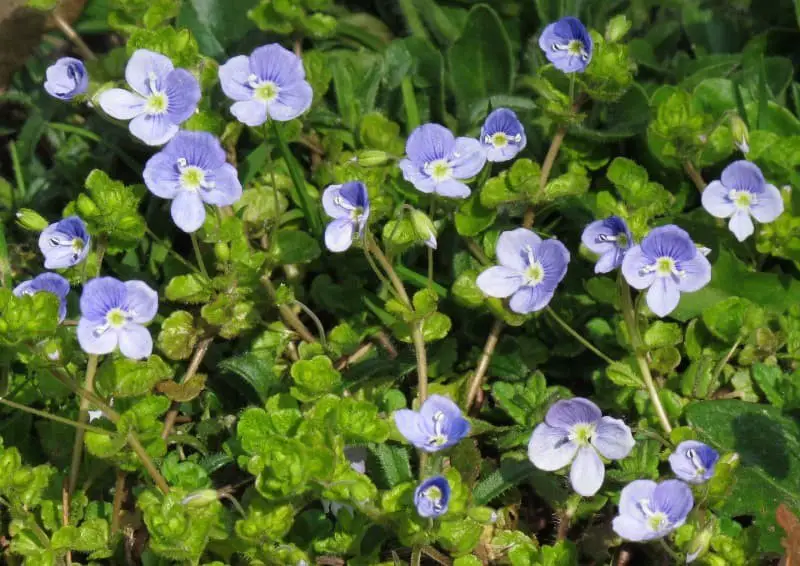
What is slender speedwell?
Despite its delicate appearance, slender speedwell is a surprisingly resilient and robust plant. A member of the Plantaginaceae family, which includes familiar species like plantain and mullein, this compact herbaceous perennial boasts a number of notable characteristics.
Its long, slender leaves are arranged in pairs along the stem, with a deep green color and smooth, shiny texture that sets it apart from other plants.
The small, blue flowers of slender speedwell emerge in early summer on short stems that arise from the leaf axils, adding a splash of color to the surrounding area.
Native to Europe and Asia, slender speedwell has been introduced to North America, where it can now be found in many states and provinces. Preferring open, sunny areas but capable of tolerating some shade, this adaptable plant thrives in environments that suit its growth habits.
Reaching a modest height of around eight inches (20 cm), slender speedwell is typically a low-growing species. However, under ideal conditions, it can grow up to two feet (60 cm) tall, making the most of its surroundings.
How to get rid of slender speedwell:
While slender speedwell can be a nuisance in your garden, taking control of its spread is crucial. One effective approach is to physically remove the weeds by pulling them up by their roots. This technique requires some care, as the roots are thin and prone to breaking off, making it challenging to eradicate the entire plant. For those who prefer a more chemical solution, glyphosate-based weed killers can be employed.
However, it’s essential to exercise caution when using this method, as it may also harm any nearby plants that come into contact with the spray. As such, it’s vital to weigh the benefits against potential risks before making a decision.
Tiny Bluets (Houstonia pusilla)

What is tiny bluets?
In North America, a dainty flower called Tiny Bluets (Houstonia pusilla) can be found growing in clusters on slender stems from May to July. Its delicate white or pale blue blooms feature five petals each. A popular choice for ornamental gardens and landscaping, Tiny Bluets are also attractive to butterflies.
The plant’s common name is derived from its diminutive size and beautiful blue hue, while the genus name Houstonia honors William Houston, a Scottish-born botanist who resided in the United States during the late 18th century and early 19th century.
How to get rid of tiny bluets:
For optimal results when attempting to eradicate tiny bluets, it’s essential to adopt a hands-on approach. When dealing with larger areas, consider utilising a lawn mower set on its highest setting. Ensure that you collect the clippings and dispose of them in an environmentally responsible manner. As an alternative, herbicides can be employed, but it’s crucial to adhere strictly to the instructions outlined on the product label.
Related Posts
While tipping lawn service workers may not be as common as gratuity in other industries, it’s essential to understand the importance of showing appreciation for their hard work. In a society where sustainability is becoming increasingly important, lawn care professionals play a vital role in maintaining green spaces that benefit both people and the environment. When considering whether or not to tip these workers, it’s crucial to recognize the value they bring to our daily lives.
By doing so, we’re not only acknowledging their labor but also contributing to the overall well-being of our communities.

